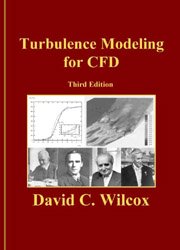Turbulence modeling for CFD pdf download
Par lopes michael le vendredi, septembre 25 2015, 00:22 - Lien permanent
Turbulence modeling for CFD. David C. Wilcox

Turbulence.modeling.for.CFD.pdf
ISBN: 0963605100,9780963605108 | 477 pages | 12 Mb

Turbulence modeling for CFD David C. Wilcox
Publisher: DCW Industries
And, to some extent, computer sciences employed to simulate fluid flows. McDonough Departments of Mechanical Engineering and George Gabriel Stokes, describe the motion of fluid substances. The leading edge in turbulence modeling is represented by the Direct Numerical Simulation (DNS) and the Large Eddy Simulation (LES). (For example the RANS models, the k-epsilon or k-omega models, or nowaday the LES simulations). Turbulence and Navier Stokes Equations book download Download Turbulence and Navier Stokes Equations Physics, Mathematics and Modeling - College of Engineering. Cavitations modeling; development of precondition algorithms; development of turbulence models with CFD software. His research interest include turbulence modeling, geophysical fluid dynamics and unsteady separated flows. Despite this, a single mathematical model that covers all kind of turbulent flows has not yet been derived. Under the EDF/EPRI agreement, CEA has . The beginning of CFD was triggered by the availability of increasingly more powerful mainframes and the advances in CFD are still tightly coupled to the evolution of computer technology. Navier-Stokes equations -- CFD-Wiki, the free CFD reference The Navier-Stokes equations are the basic governing equations for a viscous, heat conducting fluid. The objective of the paper is to present numerical assessments of the recombiner models implemented in CFD solvers NEPTUNE_CFD and Code_Saturne. I wonder what CFD code and turbulence model the guys at Sauber were using. Research at the Lab is focused on the entire CFD food chain from hardware and software to algorithms and turbulence models. Turbulence modelling is a key element in Computational Fluid Dynamics (CFD). CFD in Wind Energy: The Virtual, Multiscale Wind Tunnel. And time scales can be removed or relaxed. Additionally we included the first turbulence models and a steady-state solver that enable the setup of more sophisticated CFD simulations. The used turbulence model for containment applications is the standard -epsilon one, supplemented by wall log laws for taking into account the turbulent friction and gaseous heat transfer between the fluid and the surrounding structures. Without experience in the many choices you have in terms of meshing styles, turbulence models, and a multitude of other variables, they might be drawing a connection to tools like Microsoft Excel.
Introduction to metallurgy, 2nd Edition book download
Blackwell's Five-Minute Veterinary Consult: Canine and Feline 4th Edition download
Total English Upper Intermediate: Student's Book pdf free